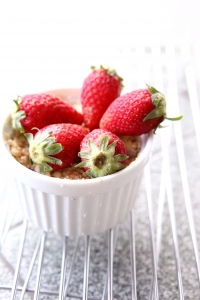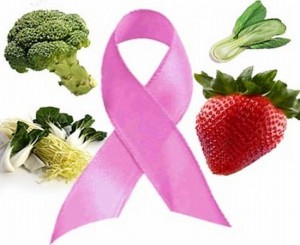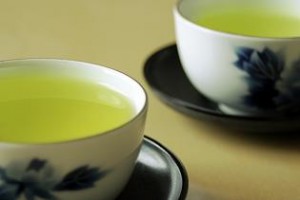Thanksgiving is only a few weeks away, and now is the perfect time to start planning your menu.
A few of our favorite Thanksgiving menu items include turkey, stuffing, mashed potatoes, and pumpkin pie. Delish!
Chances are these items are probably already on your dinner menu.
But Thanksgiving is all about food. The more, the better! Se we thought we’d share a few of our other favorite healthy recipes for side dishes with you this year.
Check out our suggestions for new and healthy Thanksgiving side dish recipes you can bring to the table this year.
Lemon-Dill Green Beans Recipe
It’s not uncommon to see a dish of green beans at Thanksgiving. But you might want to try jazzing up your green beans this year with this lemon-dill recipe.
This side dish tastes fresh, provides everyone with a serving of vegetables, and, most important, is easy to make. Check it out.
Ingredients
- 1 tbs. lemon juice (from a fresh lemon)
- 1 tsp. whole-grain mustard
- ¼ tsp. salt
- ¼ pepper
- 1 lb. green beans
- 4 tsp. chopped dill
- 1 tbs. minced shallot
- 1 tbs. olive oil
Directions
#1 Bring an inch of water to a boil in a large saucepan fitted with a steamer basket. Add green beans, cover and cook until tender-crisp, 5 to 7 minutes. Remove from the heat.
#2 Meanwhile, whisk dill, shallot, oil, lemon juice, mustard, salt and pepper in a large bowl. Add the green beans and toss to coat. Let stand about 10 minutes before serving to blend flavors.
Recipe Source: http://www.eatingwell.com/recipe/252642/lemon-dill-green-beans/
Barley & Wild Rice Pilaf with Pomegranate Seeds Recipe
Mix it up this year by bringing a rice dish to the Thanksgiving dinner table.
Barley is a whole grain that is an important source of dietary fiber, vitamins, and, which are not found in refined or “enriched” grains. And the pomegranate seeds in this dish are a superfood that adds a great source of antioxidants in this dish.
Ingredients
- 2 teaspoons extra-virgin olive oil
- 1 medium onion, finely chopped
- 1/2 cup wild rice, rinsed
- 1/2 cup pearl barley
- 3 cups reduced-sodium chicken broth, or vegetable broth
- 1/3 cup pine nuts
- 1 cup pomegranate seeds, (1 large fruit)
- 2 teaspoons freshly grated lemon zest
- 2 tablespoons chopped flat-leaf parsley
Directions
#1 Heat oil in a large saucepan over medium heat. Add onion and cook, stirring often, until softened. Add wild rice and barley; stir for a few seconds. Add broth and bring to a simmer. Reduce heat to low, cover and simmer until the wild rice and barley are tender and most of the liquid has been absorbed, 45 to 50 minutes.
#2 Meanwhile, toast pine nuts in a small, dry skillet over medium-low heat, stirring constantly, until light golden and fragrant, 2 to 3 minutes. Transfer to a small bowl to cool.
#3 Add pomegranate seeds, lemon zest, parsley and the toasted pine nuts to the pilaf; fluff with a fork. Serve hot.
Recipe Source: http://www.eatingwell.com/recipe/248741/barley-wild-rice-pilaf-with-pomegranate-seeds/
Massaged Kale Salad Recipe
With a lot of heavy, carb-loaded foods around the table, it’s sometimes refreshing to enjoy a fresh salad.
The main ingredient in this salad is kale. Kale is high in iron, loaded with antioxidants, and a natural anti-inflammatory.
Add a little cheese and some dressing, and this side dish is sure to be a hit.
Ingredients
- 2 bunches kale
- 1/2 cup freshly grated Parmesan cheese
- 1/3 cup extra-virgin olive oil
- 1/4 cup lemon juice
- 3 large cloves garlic, minced
- 1 tbs. reduced-sodium soy sauce
- 1 minced anchovy fillet or 1/2 tsp. anchovy paste (optional)
- 1/2 tsp. freshly ground pepper
- 1/4 tsp. salt
Directions
#1 Strip kale leaves from the stems and then wash and dry the leaves.
#2 Tear the leaves into small pieces and place in a large bowl.
#3 Add Parmesan, oil, lemon juice, garlic, soy sauce, anchovy (if using), pepper and salt. With clean hands, firmly massage and crush the greens to work in the flavoring. Stop when the volume of greens is reduced by about half. The greens should look a little darker and somewhat shiny.
#4 Taste and adjust seasoning with more Parmesan, lemon juice, garlic, soy sauce and/or pepper, if desired.
Recipe Source: http://www.eatingwell.com/recipe/252167/massaged-kale-salad/
Pan Seared Brussels Sprouts Recipe
Skip bringing the cold veggie tray this year and try your hand at making some delicious ban seared Brussel sprouts instead. This fantastic recipe comes from our friends at Positive Health Wellness.
This veggie is packed with numerous nutrients including vitamin B6, dietary fiber, vitamin B1, potassium, phosphorus, and omega-3 fatty acids.
And the best part is that you don’t have to be a professional chef to make them. Give this quick, easy, and savory recipe a try.
Ingredients
- ½ pound of Brussels sprouts halved with stems removed.
- 2 garlic cloves, thinly sliced.
- 1 ½ tbs. grass-fed butter (or sub vegan butter)
- 1 tbs. of extra virgin olive oil
Directions
#1 Melt 1 tablespoon of butter along with the oil in a skillet over medium heat.
#2 Cook and stir garlic until fragrant. Transfer garlic to a small bowl.
#3 Reduce heat to low and place the sprouts on the skillet, cut sides down. Sprinkle salt to taste.
#4 Cook sprouts without turning for about 15 minutes or until they’re slightly browned. Once cooked, transfer to a plate with brown sides up.
#5 Add garlic and the remaining 1/2 tablespoon of butter to the skillet and cook over medium heat, about 1 minute.
#6 Drizzle the mixture over your sprouts and sprinkle with ground black pepper to taste.
Recipe Source: https://www.positivehealthwellness.com/recipes/12-super-addictive-brussells-sprout-recipes-home/











